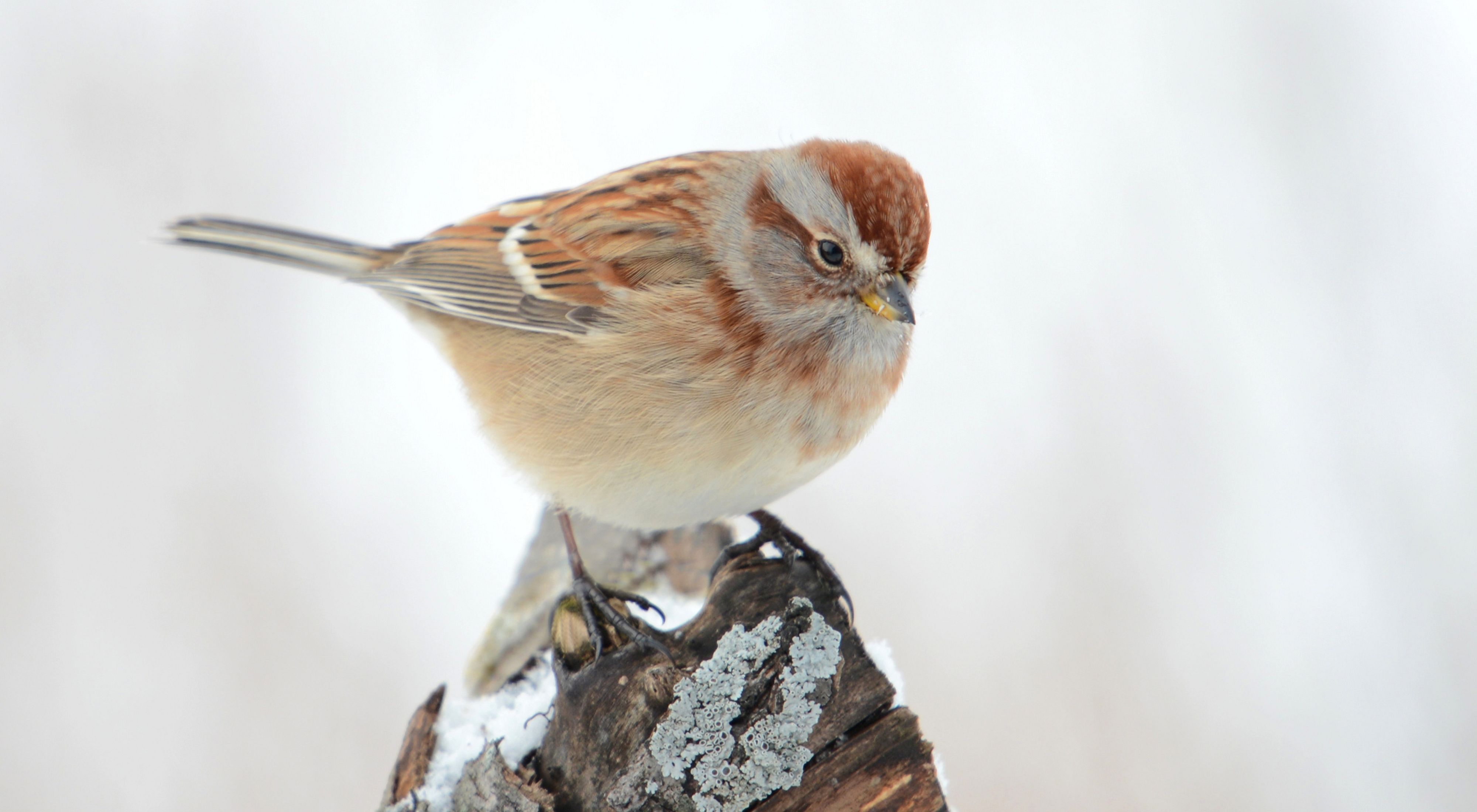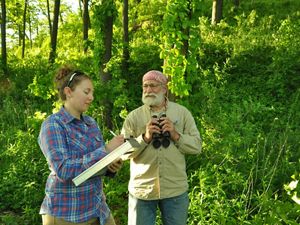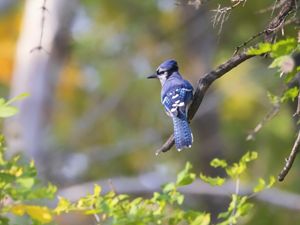Midwest Winter Birding
Winter birding can provide opportunities to help common birds and to see rare ones as they move through your area.
Winter in the Midwest provides us the unique opportunity to gaze into treetops, our view no longer blocked by the orange and red leaves of autumn. Birdwatchers rejoice, as it becomes just that much easier to spot the bright red wings of a cardinal contrasting against the branches.
During the season, those with a watchful eye (and a bit of luck) may see species such as woodpeckers (red-bellied, hairy, downy, pileated), finches and the rare snowy owl.
Some winters bring a rare occurrence known as a bird irruption. These irruptions happen when conifers in the northern U.S. and Canada experience high crop yields, causing bird populations to skyrocket due to a high abundance of seeds and other sources of food.
Once winter rolls around, there isn’t enough food and habitat to sustain these high populations. So, they take to the skies, flocking south in search of new habitat, leading to unusual species such as the evening grosbeak, hoary redpoll and pine grosbeak visiting backyards this time of year.
Whether you live in an apartment with a small window feeder or in the suburbs with a large backyard for attracting birds, here are some tips and tricks you can deploy in your birdwatching endeavors.
How to Help Birds in the Winter
A messy yard is one of the easiest ways to help birds in the winter. Spare yourself the backache of raking and clearing leaves, they’ll enrich the soil and provide habitat for bugs and other critters for birds to snack on.
Instead, focus your efforts on building a brush pile. Start with a foundation of larger logs, then layer branches, leaves and other yard trimmings over the top. This will shelter birds from sleet and snow showers, as well as provide habitat for small mammals.
If you’re lucky, American tree sparrows, black-capped chickadees and other winter birds may find refuge in your brush pile, according to the Audubon Society.
Winter birds also have trouble finding clean water sources that aren’t frozen over. Take a shallow pan no more than two inches deep and keep it filled with fresh water. Toss a few small pebbles or stones into the pan so the birds can gauge how deep the water is. You should leave the pan in a sunny area if it’s a particularly cold day, so the water doesn’t freeze as quickly.
Get creative! If you have little ones at home that want to get involved, creating your own bird feeder is bundles of fun for you and for the birds! This DIY bird feeder guide from the Audubon Society will walk you through every step. All it takes to get started is a milk carton.
7 Birds You Can Spot in Winter
Warblers and cranes may head south for the winter, but many birds stick it out in the Midwest.
-Matt-Williams.jpg?crop=0%2C0%2C4000%2C3000&wid=640&hei=480&scl=6.25)
Northern Cardinal
Keep your feeder filled with black sunflower seeds, and you are sure to attract the beautiful northern cardinal. Year-round residents, both males and females sing, a sure way to brighten up a winter day.
Northern Cardinal
Song calls of the northern cardinal.
A northern cardinal is recorded making its well-known song.
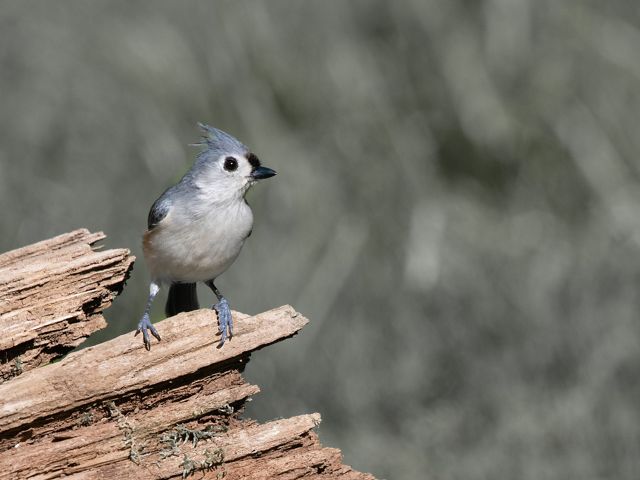
Tufted titmouse
The charming tufted titmouse with its gray crest is partial to sunflower seeds but will also eat peanuts and other seeds. Keep an eye out to see what happens when they get a large seed; they’ll carry it to a tree limb or other perch and crack it with a few whacks of their bill.
Tufted Titmouse Song
The song of a tufted titmouse.
A recording of a tufted titmouse singing its notable song.

Stay connected for the latest news from nature.
Get global conservation stories, news and local opportunities near you. Check out a sample Nature News email
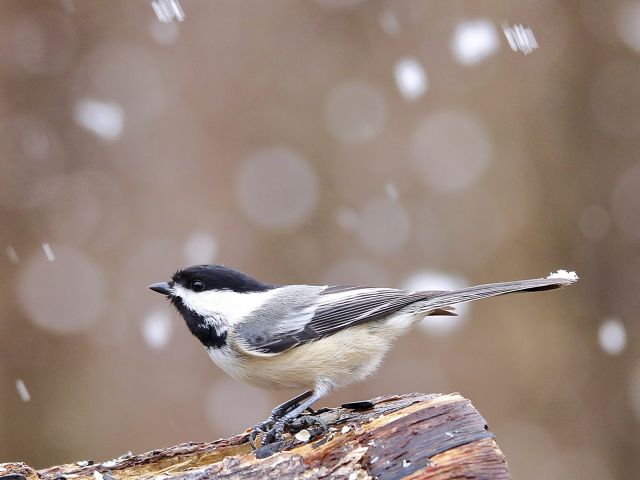
Black-capped Chickadee
The black-capped chickadee eats a lot in the winter—20 times more than in the summer. Keep your feeders full of sunflower, safflower and nyjer seeds and put out some suet to help this inquisitive little bird make it through the winter.
Black-capped Chickadee
Two-note AB call of a black-capped chickadee.
The easily recognizable two note AB call of the black-capped chickadee.
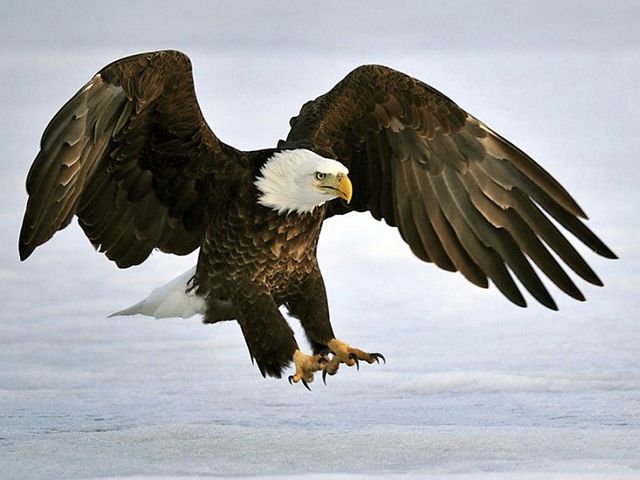
Bald eagle
Winter is a great time for eagle watching. When lakes and rivers freeze over, bald eagles congregate in large trees along shorelines where dams and power plants provide open water where they can fish.
Bald Eagle
Low kuk kuk calls of the bald eagle.
A bald eagle making low kuk kuk kuk calls.
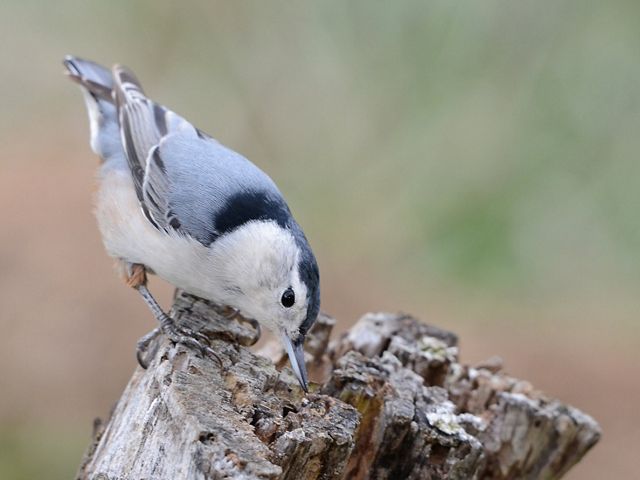
White-breasted nuthatch
Offer up large nuts like peanuts and sunflower seeds, and you’re likely to attract the agile white-breasted nuthatch. Keep the nuthatch and all the birds you feed healthy by cleaning your feeders regularly, discarding soggy or icy seed and letting them dry before refilling.
White-breasted Nuthatch
Calls of a white-breasted nuthatch.
Recording of the ank ank ank calls of the white-breasted nuthatch.

Downy woodpecker
Downy woodpeckers prefer suet, but they aren’t so picky that they’d turn down sunflower seeds, millet or peanuts. Place your feeders near shrubs, trees or other protective cover to keep them and the other birds you attract safe from predators.
Downy Woodpecker
Whinny calls of the downy woodpecker.

Snowy owl
Snowy owls breed in the treeless Arctic tundra, so when they come down into our Midwestern states, they seek out the same open expansive habitat. Look for them in farm fields, near airports, over large wetlands and along coastal areas.
Snowy Owl Bark and Bill Snap
A female snowy owl barking and snapping its bill.
A recording of a female snowy owl making barking sounds and snapping its bill.
Take Flight!
We hope you enjoy watching for these feathered friends this winter. We also hope you’ll continue to learn more about the myriad bird species that thrive in the wetlands, prairies, forests and other wild places The Nature Conservancy and our partners work hard to protect for people and nature.
